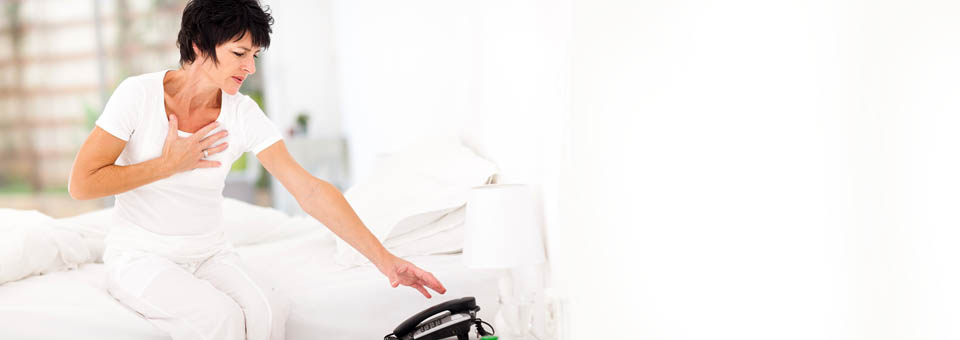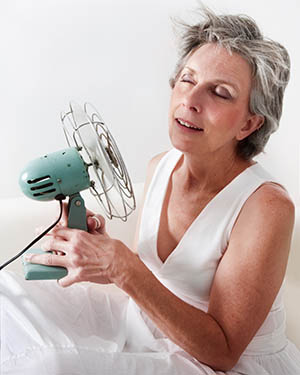
I’m not a woman, so I’ve never had a hot flash…
And from the way my female patients talk about them, I’m thankful. The women who come to me complaining of extreme hot flashes are downright miserable. If you’ve ever suffered through the sudden heat and sweating, you can probably relate.
Hot flashes are one of the most common symptoms of menopause. In fact, 70% of women get them. And you can have them for up to a decade.
But hot flashes are more than a nuisance. They can also be an early warning sign of deadly heart disease.
Let me explain…
A new study from the University of Pittsburgh School of Medicine looked at 272 women between the age of 40 and 60 years. The women tracked their hot flashes.

At the same time, researchers looked at the women’s endothelium — the inner lining of their blood vessels. They found that hot flashes were linked to a lower ability of blood vessels to dilate and allow blood to flow freely. The problem was worse in younger women aged 40 to 54.1
I help my patients stop hot flashes in their tracks by balancing their hormones. And that can help stop the wear and tear on your blood vessels that leads to heart disease.
Most doctors think hot flashes are caused by low estrogen levels. But that’s not the issue…
It’s the drop in progesterone at menopause that’s the real issue. Progesterone can fall to almost zero. I see this a lot in my women patients.
Meanwhile, our environment floods women’s bodies with fake estrogens and creates a condition called estrogen dominance. That imbalance contributes to hot flashes. But it also threatens your heart in another way…
Low levels of natural progesterone have been linked to the kinds of blood vessel spasms that lead to deadly heart attacks.2 Progesterone also protects blood vessels against the kind of hardening of the arteries that lead to heart disease.
But here’s the problem…
Most doctors prescribe Big Pharma’s synthetic progesterone called progestin. It’s dangerous. Studies show progestin increases a woman’s heart disease risk by 24% and her stroke risk by 31%.3
I don’t use Big Pharma’s hormone drugs. Instead I use bioidentical hormones. They are exact replicas of your body’s missing hormones. They’re not chemical imposters. Your body responds naturally to them.
I start by measuring estrogen and progesterone to get your levels. By getting tested you get an exact formula for your body. And a compounding pharmacy creates your unique blend.
If you are in South Florida — or can travel here — you can make an appointment for a consultation. Just call the Sears Institute for Anti-Aging Medicine at 561-784-7852.
I also recommend natural herbs to help cool hot flashes and boost progesterone…
Two Herbs That Take the Heat out of Hot Flashes
1. Chasteberry. This herb is nature’s gentle hormone balancer. Studies show chasteberry regulates several hormones and stimulates progesterone production. In one study, women using chasteberry reported vast improvements in hot flashes and night sweats as well as other menopause symptoms.4 Take 300 mg in tablet form once a day.
2. Sarsaparilla. I first saw this vine growing in the Brazilian rainforest. It contains plant compounds called saponins. These are building blocks of progesterone and other hormones. By increasing progesterone activity, sarsaparilla helps relieve menopause symptoms.
I recommend using sarsaparilla tea. You can find it online. Try drinking 1 cup of the tea 2 to 3 times daily. Just be careful. Too much can cause gastrointestinal upset. Back off if you experience any problems.
To Your Good Health,
![]()
Al Sears, MD, CNS
1. Thurston RC, Chang Y, Barinas-Mitchell E., et al. “Physiologically assessed hot flashes and endothelial function among midlife women.” Menopause. 2017.
2.Miyagawa K, Rosch J, Stanczyk F, Hermsmeyer K. “Medroxyprogesterone acetate interferes with ovarian steroid protection against coronary vasospasm.” Nature Medicine. 1997; 3: 324-327.
3.Zoler, Mitchel L. “Risks of Hormone Therapy Dwarfed Benefits in WHI.” Family Practice News. March, 2006. Retrieved Feb 28, 2012.
4.Lucks BC., et al, “Vitex agnus-castus essential oil and menopausal balance: a self-care survey.”
Complementary Therapies in Nursing and Midwifery. Volume 8, Issue 3, August 2002, 148-154.








